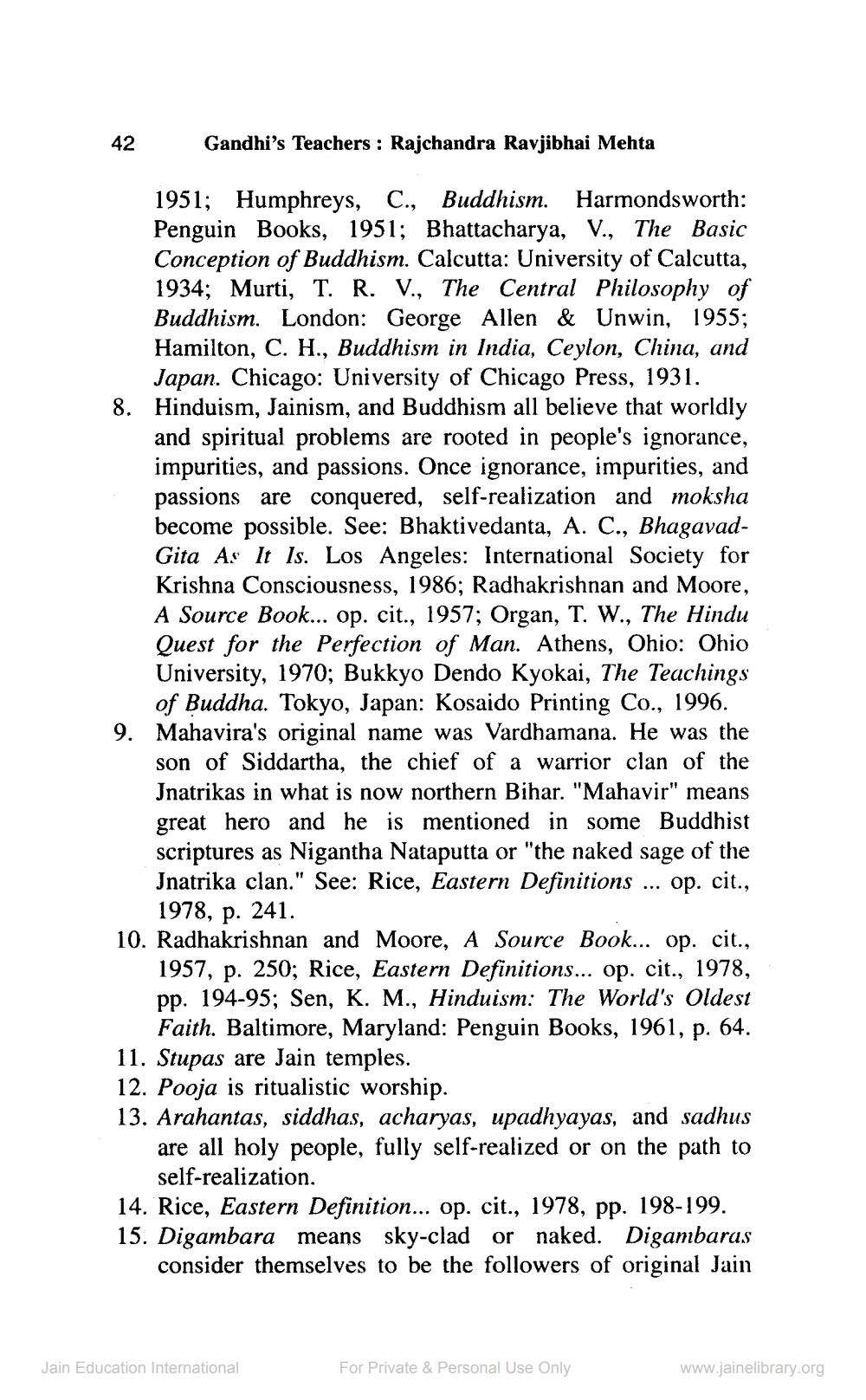________________
42
Gandhi's Teachers : Rajchandra Ravjibhai Mehta
1951; Humphreys, C., Buddhism. Harmondsworth: Penguin Books, 1951; Bhattacharya, V., The Basic Conception of Buddhism. Calcutta: University of Calcutta, 1934; Murti, T. R. V., The Central Philosophy of Buddhism. London: George Allen & Unwin, 1955; Hamilton, C. H., Buddhism in India, Ceylon, China, and
Japan. Chicago: University of Chicago Press, 1931. 8. Hinduism, Jainism, and Buddhism all believe that worldly
and spiritual problems are rooted in people's ignorance, impurities, and passions. Once ignorance, impurities, and passions are conquered, self-realization and moksha become possible. See: Bhaktivedanta, A. C., BhagavadGita As It Is. Los Angeles: International Society for Krishna Consciousness, 1986; Radhakrishnan and Moore, A Source Book... op. cit., 1957; Organ, T. W., The Hindu Quest for the Perfection of Man. Athens, Ohio: Ohio University, 1970; Bukkyo Dendo Kyokai, The Teachings
of Buddha. Tokyo, Japan: Kosaido Printing Co., 1996. 9. Mahavira's original name was Vardhamana. He was the
son of Siddartha, the chief of a warrior clan of the Jnatrikas in what is now northern Bihar. "Mahavir" means great hero and he is mentioned in some Buddhist scriptures as Nigantha Nataputta or "the naked sage of the Jnatrika clan." See: Rice, Eastern Definitions ... op. cit.,
1978, p. 241. 10. Radhakrishnan and Moore, A Source Book... op. cit.,
1957, p. 250; Rice, Eastern Definitions... op. cit., 1978, pp. 194-95; Sen, K. M., Hinduism: The World's Oldest
Faith. Baltimore, Maryland: Penguin Books, 1961, p. 64. 11. Stupas are Jain temples. 12. Pooja is ritualistic worship. 13. Arahantas, siddhas, acharyas, upadhyayas, and sadhus
are all holy people, fully self-realized or on the path to
self-realization. 14. Rice, Eastern Definition... op. cit., 1978, pp. 198-199. 15. Digambara means sky-clad or naked. Digambaras
consider themselves to be the followers of original Jain
Jain Education International
For Private & Personal Use Only
www.jainelibrary.org




